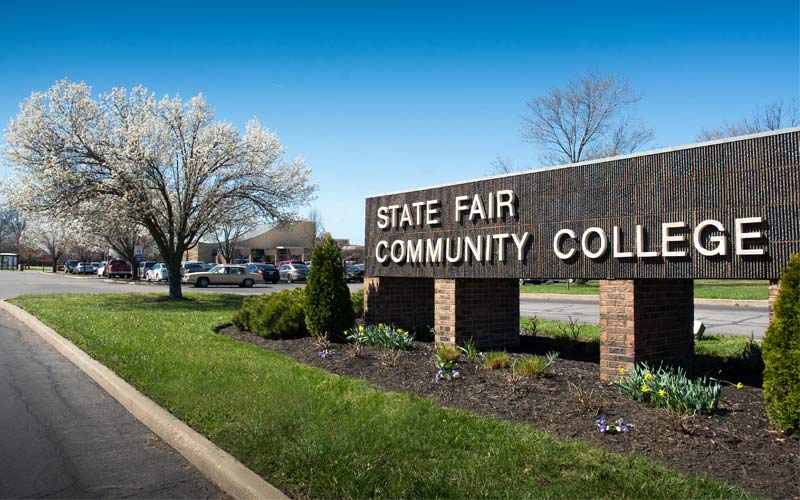Teaching Community College Chemistry Where Graduation Isn't Guaranteed



Phil Silverman approaches education with clear-eyed pragmatism. A former Naval Academy chemistry instructor, aerospace physiologist, and volunteer firefighter, he's taught across vastly different contexts over decades. When he came to State Fair Community College three years ago, he knew one thing immediately: his online chemistry students would need something completely different than what worked at research universities or the Naval Academy.
"You have to remember," Phil says, "only about 1 in 5 community college students will graduate with a four-year degree. These students come with a lot of challenges, but they're not less capable—they just need a different kind of support."
State Fair Community College in Sedalia, Missouri, serves 14 counties across Missouri with a mission to 'provide relevant and responsive learning experiences that empower students and communities to prosper.' With nearly 4,000 students across multiple campuses, it's typical of rural community colleges where affordability and accessibility matter as much as academics.
Phil's teaching philosophy has been shaped by his unique background. He spent 18 years at the University of Missouri, coordinating lab programs for thousands of students. Before that, he taught chemistry at the U.S. Naval Academy, where he also served as an aerospace physiologist. He's been a volunteer firefighter and EMT.
All of these experiences taught him one thing: context matters. What works for midshipmen doesn't work for community college students juggling work, family, and financial stress.
"Students are more likely to have housing insecurity, food insecurity. If their stuff goes sideways, they don't have the financial resilience that students from well-off suburban families might have. Teaching here, you have to realize that and adjust accordingly."
His intro to chemistry course is designed for students pursuing careers as dental hygienists, medical assistants, PTAs, and other healthcare roles. It's applied chemistry focused on medication, nutrition, and real-world applications that these students will actually use.
When Phil arrived at State Fair, he needed a solution for online labs that was safe, accessible, and effective for students who'd never set foot in a chemistry lab. He'd heard about Labster years earlier but was impressed by how much the platform had evolved.
"I was playing with it in fall 2023, then set up a sandbox for my organic chemistry students in spring 2024," Phil says. "I went in and did some stuff and was like, okay, this will work."
What drew him in wasn't the technology for technology's sake—it was how it solved real problems. Students could practice at their own pace, fail without consequences, get immediate feedback, and build confidence in a low-pressure environment. Since fall 2024, he's used Labster across 6-7 sections, serving approximately 140-160 students in intro chemistry online.
"The students really enjoy it. They're getting good, fast feedback, and the quiz questions built in are solid," Phil says. "Students are coming away with a good sense that they've had something quality. They said 'it's kind of like playing a really big video game.' "
The self-paced nature matters enormously for his population. "Remember, we're dealing with community college students—they may be juggling jobs, families, unreliable internet access. The nice thing is that students are able to do what they need to in Labster."
Phil might not give a transformation story. But he does notice patterns.
"Nothing succeeds like success," he says. "When students are able to turn around and say 'I had a good experience,' that's going to make them want to dive back in the pool. The more positive basic experiences we do, the more we're slowly building up the confidence."
This compounding confidence is what Phil believes makes the difference between students who persist in STEM and those who drop out. "If they're getting positive feedback, they in turn will want to engage."
He contrasts his intro students with his general chemistry students (who he doesn't teach online and who don't use Labster). Gen chem students are pre-med, engineering majors—the "usual suspects" who are already confident in their abilities. His intro students need something different.
"Community college students, confidence is something that comes in very short supply. Half the time students won't give positive feedback—they only complain. But Labster? They like it. Not a lot of students will say it, but they're just going along with it. And that tells me it's working."
After discussing struggling students, systemic barriers, and the challenges of teaching in rural Missouri, Phil's tone shifts when asked what he actually loves about teaching.
"Oh, I love it. It's the best," he says, animated. "Teaching science is like—you're taking someone's karma and completely moving it in a direction that wouldn't be possible without the investment. Being able to watch the light bulbs go on can be very special."
He stays in touch with former students—undergraduates who became teaching assistants, students now finishing PhDs.
"There are lots of ways I could be making money right now," Phil admits. "But this is one of the coolest. It's just so much fun."
For all his tough talk about lowering expectations and managing student challenges, Phil Silverman is doing exactly what he's always done: meeting people where they are, giving them the tools they need to succeed, and watching them exceed what they—and sometimes others—thought possible.
“My current students are not as resilient as students were 15 years ago. But the trust your students put in you is gained in teaspoons and lost in gallons. You have to really be careful. And when you get it right? That's the whole point."

See our plan options, learn more about virtual labs, and find out how easy it is to get started with Labster.
Compare Plans